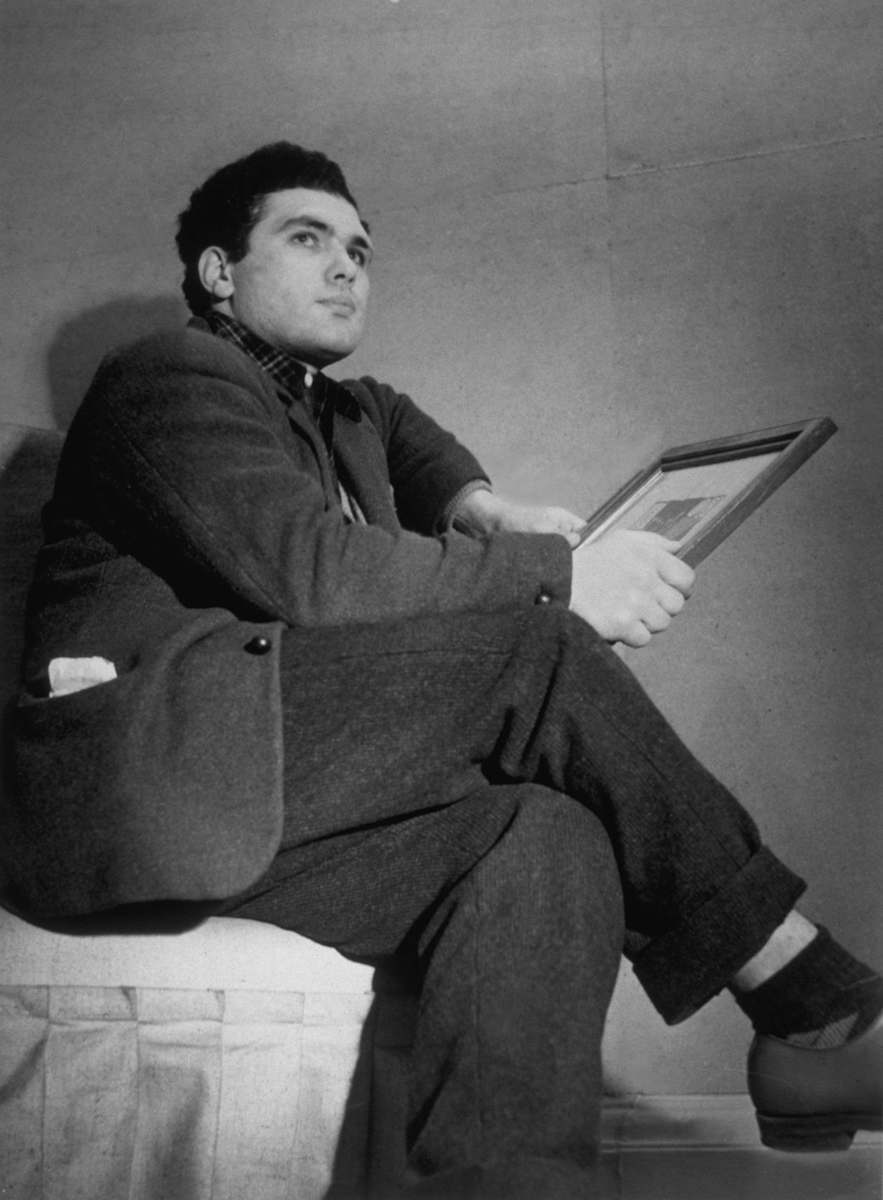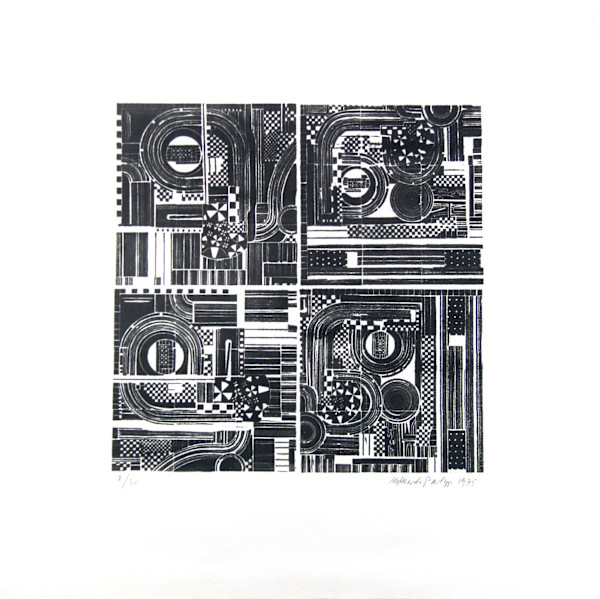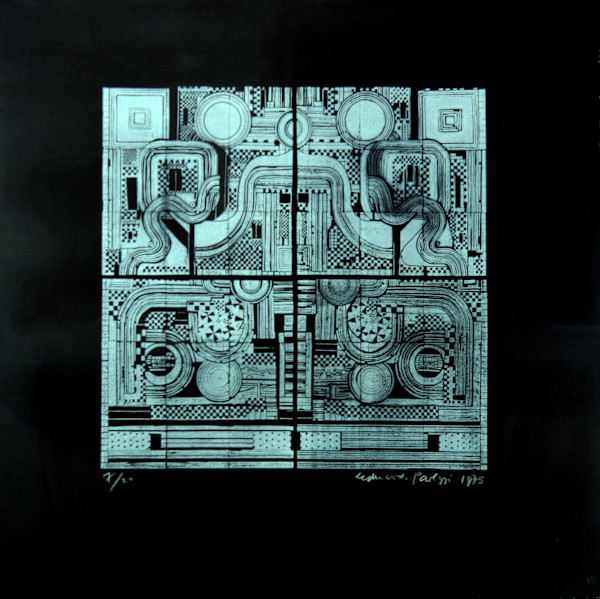
-
Artist: Eduardo Paolozzi (Scottish, 1924-2005)
Eduardo Paolozzi (1924–2005) was a Scottish sculptor, artist, and printmaker of Italian descent. He is considered one of the pioneers of the Pop Art movement, though his work transcended traditional categories, blending surrealism, abstraction, and technology-inspired forms. Here are some key points about his life and work:
Early Life and Education:
Born: March 7, 1924, in Leith, Edinburgh, Scotland, to Italian immigrant parents.
Education: Paolozzi studied at the Edinburgh College of Art and later attended the Slade School of Fine Art in London.
During World War II, he was briefly interned due to his Italian heritage but was later released and continued his studies.
Artistic Style:
Paolozzi’s work was highly eclectic, and he drew inspiration from various sources including Dada, Surrealism, industrial machinery, and mass media imagery.
He is widely regarded for blending high and low culture, often incorporating elements of consumerism and pop culture, such as comic strips and advertisements, into his art. This practice was an early precursor to Pop Art.
Use of Found Objects: Paolozzi often incorporated found objects and machine parts into his sculptures, reflecting his fascination with technology and modernity.
Notable Contributions and Works:
Early Influence on Pop Art: In the late 1940s and early 1950s, Paolozzi began creating collage art using magazine cutouts. His BUNK! series (1952), a collection of collage works, is considered a precursor to Pop Art, featuring images of American consumer culture.
Sculptures: Paolozzi is renowned for his large-scale, industrial-looking sculptures, many of which are public artworks in cities around the world. His 1986 bronze sculpture, "Newton", located outside the British Library in London, is one of his most famous public pieces. It portrays Isaac Newton based on a drawing by the British artist William Blake, symbolizing the intersection of science and art.
Printmaking: Paolozzi was also an innovative printmaker, producing striking screen prints and lithographs. His vibrant 1960s series "As Is When" is one of his most famous, combining abstract forms with references to philosopher Ludwig Wittgenstein.
Influence of Technology:
Paolozzi's work reflects a deep interest in modern technology and machinery, often blending organic and mechanical forms. His use of geometric and machine-like shapes in both his sculptures and collages explores the relationship between humans and machines.
Exhibitions and Recognition:
Paolozzi held numerous solo exhibitions throughout his life and was featured in major international exhibitions, including the Venice Biennale.
In 1989, he was knighted for his contributions to art.
He was also a founder of the Independent Group, a collective of artists, architects, and critics in London in the 1950s, which is considered a precursor to the Pop Art movement in Britain.
Legacy:
Eduardo Paolozzi's influence on both Pop Art and the broader art world is significant. His innovative use of media, collage, and industrial materials helped blur the lines between fine art and popular culture. Today, his works are housed in prestigious collections around the world, including Tate in London, and many of his public sculptures remain iconic landmarks in various cities.
Paolozzi is remembered for his inventive, boundary-pushing approach to art, merging diverse disciplines and often questioning the nature of modern culture, technology, and consumerism.
Powered by Artwork Archive

